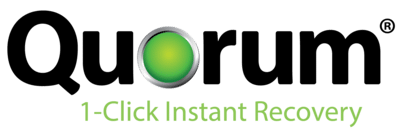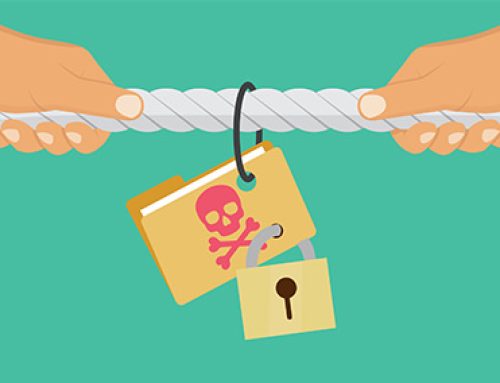In backup and disaster recovery, speed is a matter of life and death. Get caught in prolonged downtime and you lose productivity and sales. Healthcare outages can risk patient lives when medical information is unavailable, while finance and business disruptions can cost organizations millions in just minutes. Downtime in any industry can cost leaders even more if they can’t recover fast enough to beat a ransomware attack.
Given the primacy of speed, IT leaders have a vested interest in finding out just how fast each solution can get. A good BDR solution needs to recover large amounts of data quickly enough to meet user expectations for unceasing continuity. But it’s not just recovery speed that matters. BDR management can waste valuable team hours when solutions require too much maintenance, from tech upgrades to testing tape or disc backups.
The ease and swiftness of the failover process can also vary from vendor to vendor. Some involve a dozen steps that require training, while other demand only one click. Performance is another issue. If your solution isn’t using data deduplication, high bandwidth requirements can slow down network performance. And if your backup system is so sluggish that users can’t access a full menu of services, your recovery isn’t worth much.
Then there’s the problem with solution support. If vendors aren’t available when you need them or send you to third-party call center techs who don’t understand the solution, it could take double or triple the time expected to troubleshoot problems. Many IT leaders don’t realize the delays inherent in their BDR solution until a storm or attack hits – and by then it’s too late.
According to the Quorum State of Disaster Recovery Report:
Over 80% of respondents say it takes more than an hour to recover from a server failure; 26% say they need more than 2 hours.
98% believe speed of backup and recovery plays an important role, with 72% of them claiming it’s very critical to their business.
4 Reasons onQ is the Fastest Solution on the Market
“I wish I had this as my production system because it’s so fast.” – Finance IT Leader
Quorum customers often describe our onQ appliance as a quantum leap in BDR. Instead of just focusing on failing over like other solutions, we’ve developed advances for every stage of the entire backup and disaster recovery system. Everything we do is fast – processing, RAM and storage. By offering advanced automation and speed in everything from backups to disaster recovery to archiving, onQ is the fastest solution in the BDR market for four reasons:
#1. onQ offers immediate recovery.
onQ lets you failover to a virtualized mirror of your environment in under 2 minutes. How do we do it? Instead of passing data through a hypervisor to a spinning disk, we boot everything into a virtual machine, using a model called hypervisor passthrough (HVPT) that allows us to run that virtual machine with direct access to compute and storage. We’re the first purpose-built BDR backup appliance to get the hypervisor out of the way, which boosts the recovery speed.
Most traditional solutions request data from slower spinning disks – but our flash speed recovery can boot a VM in less than 2 minutes, unlike other BDR vendors who can rarely even reach 5 minutes.
#2. We have the simplest and fastest failover process in market.
If you’ve used another BDR solution, you may consider failover the most difficult step in recovery. Other vendors tend to feature complicated failover processes with anywhere from six or even a dozen steps, which means the team must be trained. If those team members aren’t available when a server fails, recovery goes on hold while someone else tries to find instructions or call the vendor support team.
onQ lets you skip all of that by offering one-click failover. There’s no complexity, just one button to click. The dashboard is simple and intuitive, with no need for an elite corps trained in the process. Whoever’s close by can initiate failover in literally one moment.
#3. Efficient automation eliminates manual tasks.
Traditional BDR requires considerable labor from IT teams, which traps them in two ways. The first: the team spends hours or days every month creating and testing backups, managing vendors for different BDR solutions and performing other tasks that aren’t an effective use of their time or skill. The second: the likelihood of human error, forgetfulness or time constraints rises, increasing the likelihood of delays and failure when the team needs to recover.
onQ offers automated testing to ensure backups are current and viable, while incremental snapshots set at the frequency of your choosing help capture critical or low-impact data at the right junctures. Our intuitive, all-in-one dashboard puts all relevant information front and center making it easy for you to take any recommended actions immediately – no researching or struggling to troubleshoot. Most customers tell us the administrative burden shrinks from days of BDR maintenance a month to mere minutes.
#4. Our clone environments run as fast as your normal environments.
While onQ has always delivered fast performance, 4.0 has reached a new level of speed. Other solutions rely on traditional backup appliances using a standard hypervisor. The result is partial recovery via a limited and sluggish environment.
onQ can not only get your clone environment up in moments, but can guarantee that replica will perform as fast – if not faster – than your production environment. Our appliances are equipped with a NVMe cache, with recovery nodes located on a virtual SAN, which is composed in the cache. These nodes have direct access to compute as the virtual SAN can supersede the hypervisor – so if you’re booting from the recovery nodes, performance stays high.
Why don’t other solutions can’t use this technology? Because it’s too costly and complex for them – only Quorum engineers have developed a way to make it work. All our appliances connect to your network with 10 gig networks, unlike the standard rate of 1 gig. We deliver a minimum of 25,000 IOPS, compared to the 1,000 IOPS of other solutions, running production workloads at lightning speed. Customers report being able to run directly on their appliance for weeks, with sustained high performance – in fact, better performance than production machines.
How much time will you save with onQ?
Day to Day Management
Quorum: Intuitive unified management console reduces management time, while automated testing eliminates tedious hours of managing and testing backups.
Weekly labor required: Minutes
Other vendors: manually testing, backup creation, data center maintenance.
Weekly labor required: 10-15 hours
Support
Quorum: One call answers every support need from the same team who built the solution.
Time to resolution: One phone call. Immediate call back after hours.
Other vendors: Third-party call centers, support technicians from other the other side of the world and queue requests to receive a call back in 2-3 days; lack of accountability from vendors who blame other point solutions.
Time to resolution: Days to weeks
Failover
Quorum: Simple 1-click failover requires no training. Anyone present can failover and bring the organization back online.
Time required: Moments
Other vendors: Failover requires anywhere from six to a dozen or more steps, with training required to navigate the software. If trained personnel aren’t present, team must wait for them or be walked through complex instructions by the vendor.
Time required: 30 minutes or more
Recovery
Quorum: onQ removes the hypervisor from the recovery process, giving the virtual machine direct access to compute and storage for flash speed recovery.
Time required: 2-4 minutes.
Other vendors: Because most BDR vendors still use traditional hypervisor models, recovery is slower.
Time required: 20 minutes to several hours or more.
Performance
Quorum: We deliver a minimum of 25,000 IOPS, with all appliances connected through 10 gig networks.
Speed achieved: Workloads run at lightning speeds – faster than production.
Other vendors: Other solutions can only run at 800-1,000 IOPS with a standard 1 gig network.
Speed achieved: Recovery is partial; environment is slow.
The Leader in Speed
As every other aspect of the technology world increases in speed and efficiency, only Quorum has done the same in the BDR market. By innovating to boost performance, accelerate recovery and simplify failover, Quorum has positioned teams to stay productive and competitive in a fast-moving world.





